Understanding the Impact of Diamond Carat Weight
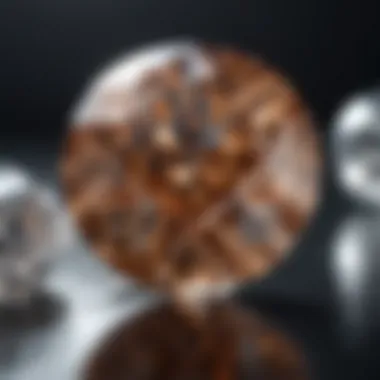
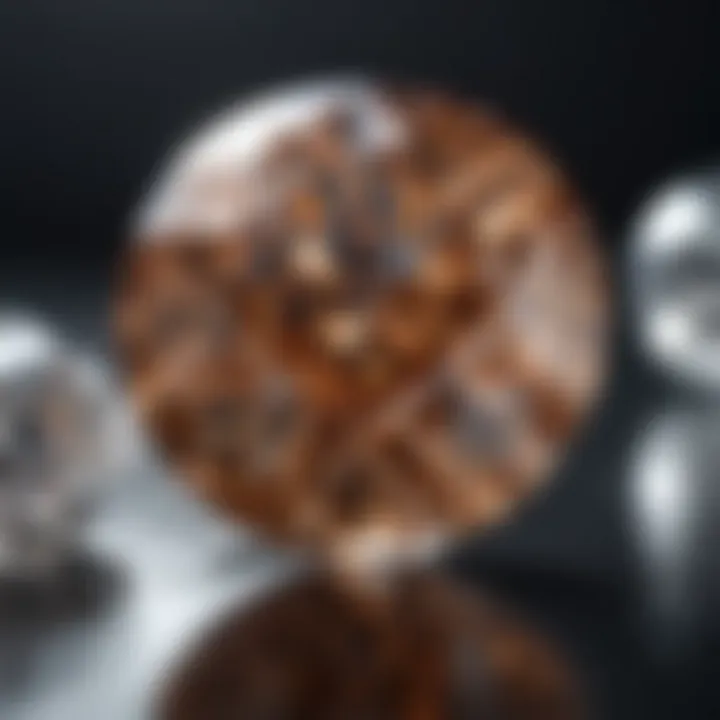
Intro
The carat weight of a diamond is not just a number; it represents significant factors that influence the stone's overall value and desirability. As one delves into the world of diamonds, understanding the nuances of carat weight becomes essential for both buyers and enthusiasts alike. This understanding enriches how one perceives beauty, rarity, and even market demand.
In this article, we will explore the various implications of carat weight on aesthetics and how it interacts with other crucial attributes including cut quality, clarity, and color. Furthermore, we will provide insights that assist in evaluating diamonds across specific carat ranges, ultimately affecting purchasing choices.
By the end of this discussion, readers will develop a clearer comprehension of how carat distinctions come into play in the context of diamond valuation and selection.
Prelude to Carat Weight
Understanding the concept of carat weight is fundamental when it comes to evaluating diamonds. The weight of a diamond, expressed in carats, plays a significant role in determining its value and allure. This section provides an overview of what carat weight signifies in the diamond industry, emphasizing the benefits and considerations that come with it.
Carat weight is not merely a measure; it represents a key factor influencing both the perception and pricing of diamonds. Larger stones are rarer and often more sought after, making their weight a critical aspect of their market value. Additionally, this understanding aids buyers in making informed decisions that go beyond mere aesthetics.
Definition of Carat Weight
A carat is a unit of weight used to describe the size of a diamond. One carat is equivalent to 200 milligrams, or 0.2 grams. Diamonds are typically measured to the hundredth decimal place for precision. The weight of a diamond directly impacts its volume, and hence its appearance, but it is crucial to remember that carat weight alone does not define the diamond's overall quality.
Historical Context of Carat Measurement
The term carat has its origins in the carob seeds that traders historically used as balance scales, primarily in gemstone mining areas. These seeds had a relatively uniform weight, making them a popular choice for weighing precious stones. While the use of carob seeds has evolved, the term ‘carat’ has remained, solidifying its importance in the evaluation of diamonds.
Over the years, the measurement of carats has been standardized globally. The introduction of the metric system in diamond trading has further shaped how carats are perceived. Understanding this historical context is helpful for consumers, offering insights into how the diamond industry has transitioned to its current methods of measurement.
The Significance of Carat Weight
Carat weight is a fundamental aspect of diamond valuation. It serves as a primary indicator of size, which in turn influences both the market value and buyer perception of diamonds. Understanding the significance of carat weight allows consumers to make informed choices when selecting diamonds that suit their preferences and budgets.
Carat Weight and Diamond Value
The carat weight of a diamond directly correlates with its value. Generally, larger diamonds are rarer than smaller ones. This rarity drives up their price. For instance, a one-carat diamond usually is valued more per carat than a half-carat diamond due to its larger size and scarcity in the market.
In practice, the actual value of a diamond is not determined solely by its carat weight. Factors such as cut, clarity, and color also play critical roles. However, carat weight often has the most visible impact on pricing. When you visit a jeweler, you will notice that each carat increment tends to drastically increase the price. Therefore, having a grasp on how carat weight aligns with diamond value is essential for buyers.
Market Perception of Carat Differences
Consumer perception of diamonds is heavily influenced by carat weight. Many people believe that a larger diamond signifies greater love or commitment. This belief can skew market trends and drive demand for diamonds in specific carat weights, often leading to increased sales of one, two, or three-carat diamonds.
"Carat weight is often perceived as a status symbol, making it a crucial factor for many consumers."
Moreover, different cultures may attribute varying levels of significance to carat weight. For some, a diamond below a certain carat weight may be considered inadequate. Consequently, retailers often emphasize larger stones in marketing materials to cater to these views.
The psychological aspect of carat weight cannot be ignored. People tend to evaluate their diamond purchases based on social norms and expectations. As a result, diamonds with higher carat weights can make an emotional impact, reinforcing the idea that larger equals better.
Overall, understanding how carat weight influences both diamond value and market perception can assist buyers in making choices that align with their budget and values.
Understanding the Carat Scale
The carat scale is fundamental in the world of diamonds. Carat weight is the standard measure used to determine a diamond's weight. Knowing how the carat scale works is essential, as it influences both value and visual presence. Larger carat weights tend to command higher prices, but understanding the scale better helps buyers make informed decisions.
How Carat Weight is Measured
Measuring carat weight is a precise process. One carat equals 200 milligrams. This standardized unit allows for consistent weight measurements globally. During the measurement process, a gemstone is placed on a scale. The weight is noted in carats, which can then reflect its value in the market.
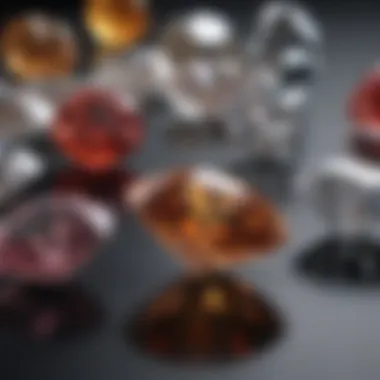
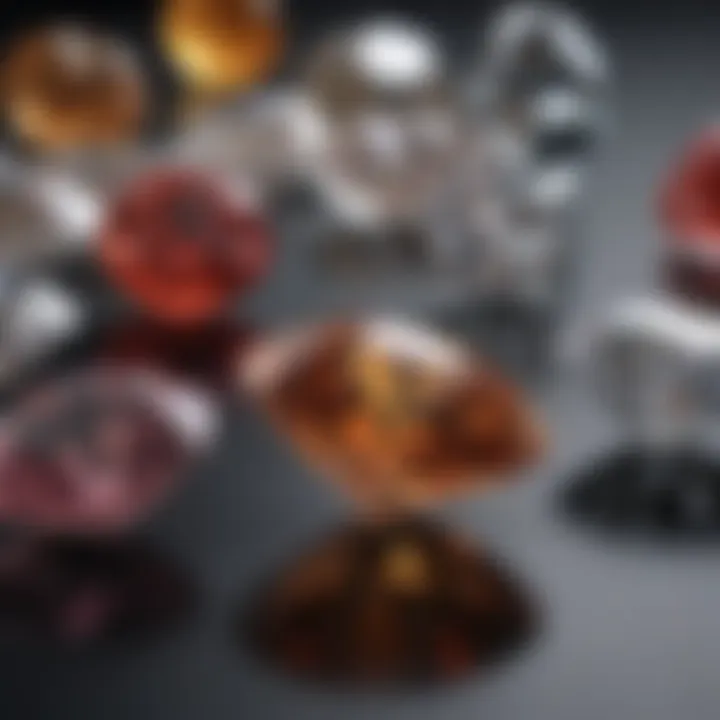
A few points to consider include:
- Precision: High-quality scales are necessary for accurate measurement.
- Calibration: Scales must be regularly calibrated to maintain accuracy.
- Gemstone Type: Some gemstones have different perceived weights based on density, but for diamonds, the carat remains fixed at 200mg.
Common Carat Weight Categories
Carat weight is often grouped into categories. Understanding these common thresholds helps in evaluating diamonds better. Here is a brief overview of typical carat weight categories:
- 0.25 Carats (¼ ct): Small but popular in delicate jewelry.
- 0.50 Carats (½ ct): A significant milestone, often seen in engagement rings.
- 1.00 Carat (1 ct): The benchmark for many buyers looking for standout pieces.
- 2.00 Carats (2 ct) and Up: These are considered luxury items and can be quite rare.
Each category has its own market perception and pricing. For example, a diamond just over 1.00 carat often sells for significantly more than one that is just under.
"Understanding the categories of carat weight can empower buyers, ensuring they make choices aligned with their budget and preferences."
Considering the carat scaling in your decision-making process can lead to a more satisfying purchase.
Carat Weight and Perception
Carat weight plays a significant role in how diamonds are perceived by both consumers and collectors. The relationship between carat weight and consumer perception impacts purchasing behavior and overall satisfaction with a diamond. This section will offer insights into the visual effects different carat sizes have and explore the expectations that arise based on those sizes. Understanding these factors helps in making informed decisions when selecting diamonds, influencing not just personal preference but also market trends.
Visual Impact of Different Carat Sizes
The visual impact of a diamond can vary dramatically based on its carat weight. Larger diamonds generally have a more striking presence. For example, a one-carat diamond often appears smaller than expected when viewed next to a two-carat diamond. The physical size is not just an illusion; it reflects the actual weight of the stone. Factors like cut and overall design can amplify or obscure this effect, but carat weight remains a fundamental element.
Some buyers may underestimate how a small difference in carat weight can affect appearance. Often, subtle differences such as 0.90 carats versus 1.00 carats can lead to perceiving the former as less valuable or appealing. Additionally, the setting and the design of jewelry play a role in how size is perceived. A diamond set in a delicate band might seem larger compared to a heavier setting. Thus, understanding these visual nuances helps buyers assess what they truly desire in a piece of jewelry.
"Larger diamonds often ignite a deeper emotional response in buyers, impacting their choice and resulting satisfaction."
Consumer Expectations Based on Carat Size
Consumer expectations around carat size are tightly linked to societal norms and marketing influences. Many consumers associate larger carat sizes with higher quality and greater importance. This perception can compel individuals to prioritize carat weight over other critical factors, such as cut quality or clarity.
When purchasing a diamond, many expect it to deliver a specific look. For instance, an engagement ring with a center stone of two carats is often perceived as more extravagant compared to one at one carat. This expectation is influenced by personal aspirations, cultural values, and marketing practices in the jewelry industry.
- Many people view diamonds in relation to status.
- The symbolism attached to larger carat weights can elevate the perceived significance of the purchase.
- Emotional connections to size often develop, tying back to personal milestones and memories.
As diamonds serve as gifts or tokens of commitment, the pressure to meet these expectations can lead to overspending or regret, especially if size becomes an overwhelming priority. Hence, a well-rounded understanding of consumer expectations is essential for navigating purchases wisely.
The Role of Cut, Clarity, and Color
The significance of cut, clarity, and color in diamonds cannot be overstated. These three attributes, often referred to as the "C Ratings," play a crucial role in determining a diamond's overall beauty and value. While carat weight grabs immediate attention, it is these characteristics that truly define the essence of a diamond.
Interactions Between Carat and Other Ratings
Understanding how carat weight interacts with cut, clarity, and color is essential for both buyers and enthusiasts. A diamond's size, indicated by its carat weight, can influence how its other qualities are perceived. For instance, a larger diamond may have noticeable inclusions that are not as apparent in smaller stones. This is because larger diamonds tend to magnify flaws. Clarity, which measures the presence of internal or external characteristics, becomes more significant when carat weight increases.
Key Interactions:
- A higher carat weight can enhance the visibility of a diamond's inclusions.
- The cut of the diamond can impact how light reflects within the stone, thus affecting its brilliance, especially in larger diamonds.
- Color depth may appear more pronounced in larger stones, altering perception.
Evaluating diamonds requires a holistic view of these ratings. Focusing only on carat weight can lead to oversights regarding clarity and cut quality. Each rating interacts to form a complete picture of the diamond's desirability.
Balancing Carat with Quality
Finding the right balance between carat weight and quality is critical for anyone looking to purchase a diamond. While larger diamonds are often seen as more desirable, their true value can diminish if the cut, clarity, or color is lacking. A smaller diamond with superior qualities can be more appealing than a larger stone that has significant flaws.
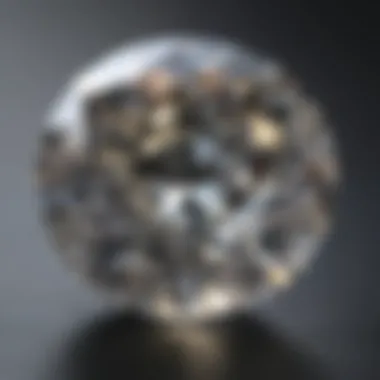
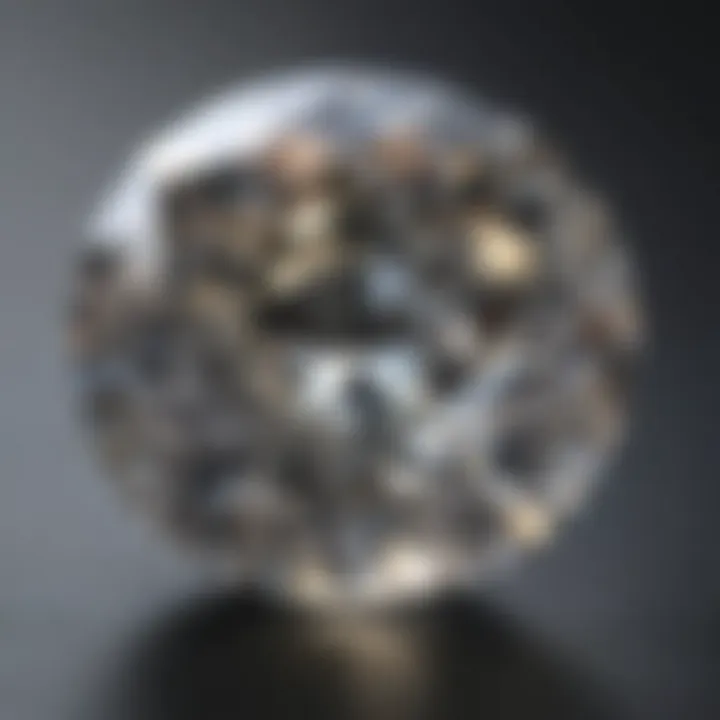
Considerations for Balancing:
- Cut: A well-cut diamond maximizes brilliance and fire. Prioritize excellent cut quality to enhance a diamond's visual appeal, regardless of its carat weight.
- Clarity: Be mindful of how clarity affects the overall beauty, particularly in larger stones. A slight blemish may be irrelevant in a small diamond but could become significant in larger sizes.
- Color: The color grade can greatly affect perception. A near-colorless stone can appear more valuable than a larger, tinted diamond.
When assessing options, it’s vital to determine personal preferences. This might involve asking questions like: How important is size versus quality? Will the diamond be worn daily, or is it for occasional use? Knowing what aspects matter most helps make an informed decision.
Ultimately, understanding how to balance carat weight with cut, clarity, and color leads to wiser, more satisfying purchasing decisions.
Practical Implications of Carat Differences
Understanding carat differences holds significant implications for both the gemstone market and consumer purchasing behavior. Carat weight affects not only the perceived value of a diamond but also its overall aesthetic appeal and market dynamics. For buyers, recognizing how carat weight influences price can lead to more informed decisions. For sellers and appraisers, understanding these implications aids in properly valued offerings that meet market expectations.
As the focus broadens from mere carat weight to the interactions of various factors, potential buyers should consider how the different aspects of a diamond influence one another. This approach can help them to balance size with quality while ensuring that choices resonate with their objectives, be they personal or investment-related.
Evaluating Diamonds by Carat Weight
When evaluating diamonds, recognizing the importance of carat weight is crucial. Carat weight directly affects pricing; higher weights typically command higher prices. However, the relationship is not linear. For instance, a two-carat diamond is often significantly pricier than two one-carat stones, due to rarity and desirability.
Here are key points to consider when evaluating diamonds by carat weight:
- Size and Appearance: A larger carat diamond may catch the eye more readily, influencing first impressions.
- Price per Carat: As weight increases, the price per carat can escalate due to increased rarity and consumer demand.
- Setting Considerations: The size of the diamond can impact the choice of setting. Larger stones may require more substantial supports.
Buyers should be mindful of their preferences and expectations when evaluating diamonds by carat weight. It is also helpful to consider that other quality aspects may enhance or detract from the visual and economic value of a larger stone.
Carat Weight Considerations for Different Budgets
Budgetary considerations play a pivotal role in determining carat weight preferences. Buyers must navigate the trade-off between size and quality. Higher budgets often allow for larger stones but buyers still need to hold significant weight to other characteristics.
Some aspects to keep in mind include:
- Tiered Budgets: Establish a clear budget which allows flexibility in other quality metrics, such as cut and clarity, that impact overall appearance.
- Long-Term Value: Consider how carat weight will influence potential resale value. A high-quality diamond, even at a lower carat weight, may retain value better over time than a larger but inferior-quality diamond.
- Personal Preference: Ultimately, choose according to what meets personal tastes, rather than solely focusing on achieving a larger carat weight.
In sum, understanding carat differences allows buyers to make choices that reflect their desires while being financially prudent.
Psychological Aspects of Carat Weight
Carat weight holds significant psychological influence over consumer behavior in the diamond market. Understanding this aspect is essential, especially for those who seek to make informed purchasing decisions. The connection between carat weight and emotional factors can dictate how a diamond is perceived, valued, and ultimately chosen.
Emotional Connection to Carat Size
The emotional weight attached to a diamond's carat size is undeniably profound. Often seen as a symbol of love and commitment, larger diamonds can elicit strong feelings of happiness and satisfaction. The moment a person receives a diamond, their perception of its value often correlates with its carat weight.
However, this emotional connection is not linear. While a larger carat can inspire joy, it can also create anxiety regarding the financial implications. Therefore, individuals may feel pressure to select a diamond that meets societal expectations, especially in engagements and weddings. The size of the diamond can sometimes overshadow other important attributes like cut or clarity, simply due to societal symbolism.
This phenomenon begs the question: does size truly correlate with worth? Many enthusiasts argue that personal significance and sentiment should hold more weight than mere dimensions. This shift in focus may help alleviate the anxiety associated with the purchase of larger diamonds.
Societal Influences on Diamond Preferences
Societal norms shape the broader context in which carat weight is evaluated. From advertisements to peer influences, many factors dictate consumer preferences. For instance, large diamonds are often marketed as the ideal choice for engagement rings, perpetuating the belief that size equals love. This cultural sentiment can reinforce the desire for larger carat sizes, even when buyers might have other preferences.
This societal influence is particularly evident in various regions. In some cultures, larger stones are viewed as status symbols. Thus, diamond buyers may feel compelled to adhere to these societal standards, even if their personal tastes differ.
Despite varying individual desires, the collective preference for larger diamonds remains prevalent due to media portrayals and traditional practices. Understanding this helps appreciate how deeply external perceptions ripple into personal choices.
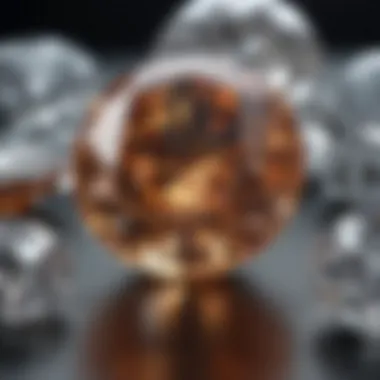
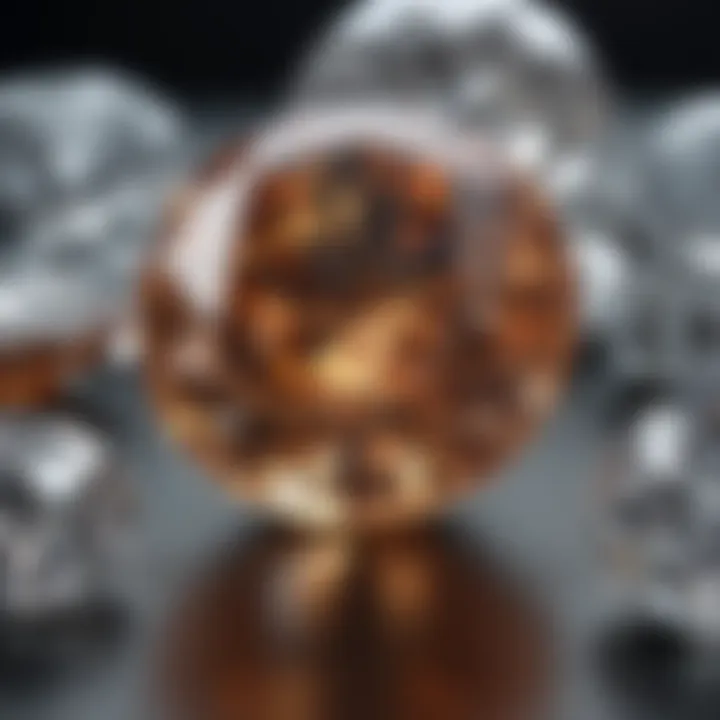
Additionally, the rise of social media has played a role in shaping these preferences. Platforms like Instagram and TikTok serve as forums for showcasing luxury purchases, including diamonds. The visibility of larger carat sizes in these spaces can inflate consumer expectations further, making smaller stones seem inadequate.
In essence, while personal feelings toward diamond purchases matter, societal influences continue to guide consumer behavior. A more profound understanding of these influences can help individuals clarify their preferences, balancing emotional connections with practical considerations.
Guidelines for Purchasing Diamonds
When considering the purchase of a diamond, it is crucial to possess a comprehensive understanding of the various factors that influence both aesthetic appeal and intrinsic value. Focusing solely on carat weight may lead to an incomplete analysis, as other attributes significantly impact the diamond's overall desirability.
Key Factors Beyond Carat Weight
While carat weight carries weight in the decision-making process, it is essential to evaluate other attributes, such as cut, clarity, and color. These components contribute directly to the diamond's visual quality and perceived value.
- Cut: This aspect determines how well a diamond reflects light. A well-cut diamond can appear larger and more brilliant than its actual carat weight might suggest.
- Clarity: Refers to the presence of inclusions or flaws. Higher clarity grades result in a more valuable and visually appealing diamond.
- Color: The less color a diamond has, the rarer and more desirable it is. An understanding of the color grading scale is important when selecting a diamond.
Knowing GIA grading and certification can provide deeper insights into quality. Investing in a diamond with balanced characteristics often results in a more satisfactory purchase.
"A diamond's beauty is not just in its weight; it is in the harmony of its qualities."
Tips for First-Time Buyers
Entering the diamond market as a first-time buyer can be overwhelming due to the multitude of choices available. However, several strategies can simplify this process.
- Set a Budget: Determine a budget that considers both the carat weight and the other grades. A well-planned budget can prevent unnecessary financial burden.
- Know the Four Cs: Familiarize yourself with carat, cut, clarity, and color. This knowledge is invaluable and will allow you to make informed decisions.
- Research Before Buying: Visit various jewelers and online platforms to compare prices and qualities. This can aid in understanding current market trends.
- Request Certification: Always seek diamonds that come with certification from reputable grading organizations like the Gemological Institute of America (GIA). This documentation can verify the quality and authenticity.
- Consider Your Lifestyle: Think about how and where you will wear the diamond. For instance, some settings are more durable than others, which may influence your choice.
- Seek Professional Guidance: Involve a trusted jeweler or gemologist who can help answer your questions and guide you in your selection.
Purchasing a diamond should not merely revolve around the carat weight; it demands a wider perspective that includes understanding quality and suitability. With careful consideration of all aspects, first-time buyers can enhance their chances of finding a diamond that meets their expectations in both beauty and value.
Future Trends in the Diamond Market
The diamond market is evolving rapidly. Understanding future trends becomes essential for enthusiasts and investors alike. Various factors play a role in shaping consumer preferences and market dynamics. As society changes, so do the reasons people buy diamonds. This section discusses some key trends worth noting.
Shifts in Consumer Preferences
Recent years have seen a significant change in how consumers approach diamond purchasing. Younger generations, particularly millennials and Gen Z, are increasingly prioritizing both ethical sourcing and environmental sustainability. The desire for authenticity and transparency is reshaping the market.
- Ethical Considerations: More consumers are aware of the ethical issues surrounding diamond mining. Diamonds from conflict zones are less appealing. Many buyers now seek diamonds with certification of ethical sourcing.
- Price Sensitivity: Economic factors influence buyers. Consumers tend to evaluate the cost per carat against their overall budget. This trend highlights a need for optimal balance between price, carat weight, and other quality aspects.
- Unique Customization: Buyers appreciate personalized experiences in their purchases. Custom-designed rings or unique diamond shapes are gaining traction, making the diamond market less about standard sizes and more about individual expression.
- Experience over Material: A shift towards valuing experiences rather than material possession affects how people view diamond ownership. Collecting memories often takes precedence over traditional views of luxury.
These intentional shifts in preferences indicate a market in transition. As consumers demand more from their diamond purchases, jewelers and brands must adapt accordingly.
Impact of Lab-Grown Diamonds on Carat Perception
Lab-grown diamonds are increasingly entering the market, creating notable shifts in how consumers perceive carat weight and value. These diamonds have the same physical, chemical, and optical properties as mined diamonds but can be produced at a fraction of the cost.
- Cost-Effectiveness: Lab-grown diamonds typically cost 20 to 40 percent less than natural diamonds. This presents an attractive option for those prioritizing larger carat sizes without breaking the bank.
- Market Acceptance: Acceptance of lab-grown diamonds is gaining momentum. More consumers and retailers see them as valid alternatives. The distinction between lab-grown and mined diamonds is becoming less significant in consumers' minds.
- Prestige and Value: Traditionally, carat weight has heavily influenced the perceived value of a diamond. With the rise of lab-grown options, the emphasis may shift towards other unique attributes. Features like personal story or customization are becoming more critical than sheer carat weight.
- Environmental Impact: Lab-grown diamonds are often viewed as more environmentally friendly. Buyers concerned about the carbon footprint of traditional mining see lab-grown options as a preferred choice. This concern further alters perceptions regarding carat weight and value.
The introduction of lab-grown diamonds presents not only an economical choice but also a cultural shift in how diamonds are viewed. These trends will continue to influence both consumer behavior and diamond market dynamics.
The End
Understanding carat weight is crucial for anyone involved in the diamond market, whether as a buyer, seller, or simply an enthusiast. This article has explored the multifaceted aspects of carat weight, revealing its influence not only on the monetary value of diamonds but also on their overall perception and aesthetic appeal.
Summary of Key Insights
The highlighted key insights include:
- Carat Weight and Value: As carat weight increases, so does the price, but this is also affected by other factors like cut, clarity, and color.
- Market Perception: Consumer preferences often dictate the importance placed on carat weight, leading to trends that prioritize size over other quality attributes.
- Visual Impact: The physical dimensions of a diamond do create a noticeable visual difference. Even small incremental changes in carat can lead to significant variations in how a diamond is appreciated.
These insights together form a framework for understanding how carats work in the diamond world. Concrete understanding is essential not only to make informed decisions but also to appreciate the nuanced nature of diamond evaluation.
Final Thoughts on Carat Importance
Carat weight remains a central theme in diamond assessments. Potential buyers should approach their decisions carefully. While larger diamonds may hold more allure, they must balance size with quality. Collectors and experts must inform themselves of the interplay between carat weight and other quality factors.
"Carat weight is more than just a number; it reflects the diamond's character and historical market trends."
By fostering a deeper understanding of its nuances, you align yourself closer to making better choices in your diamond pursuits.



